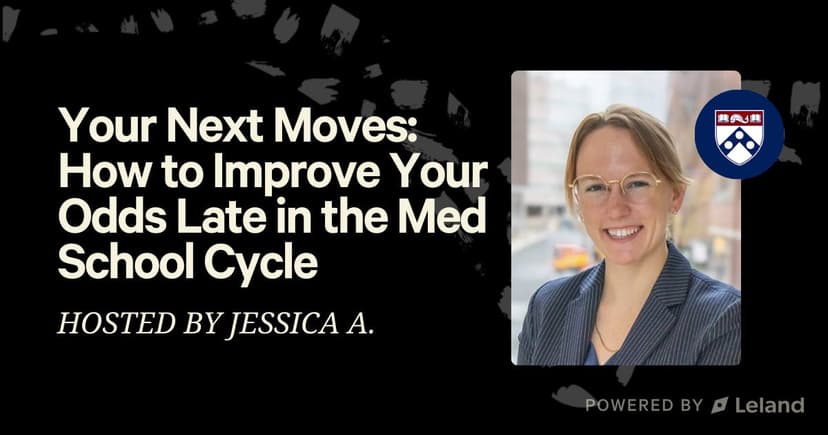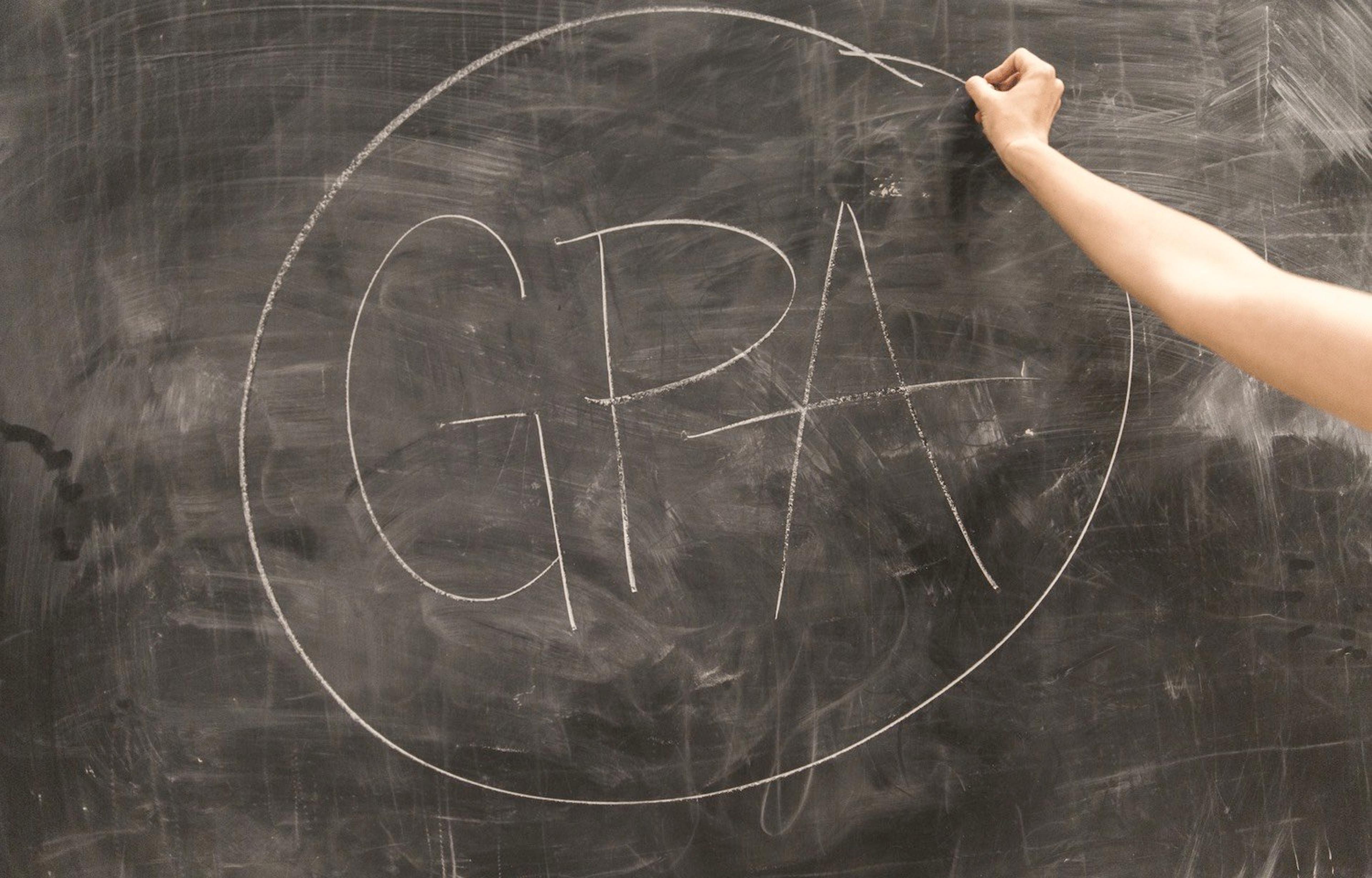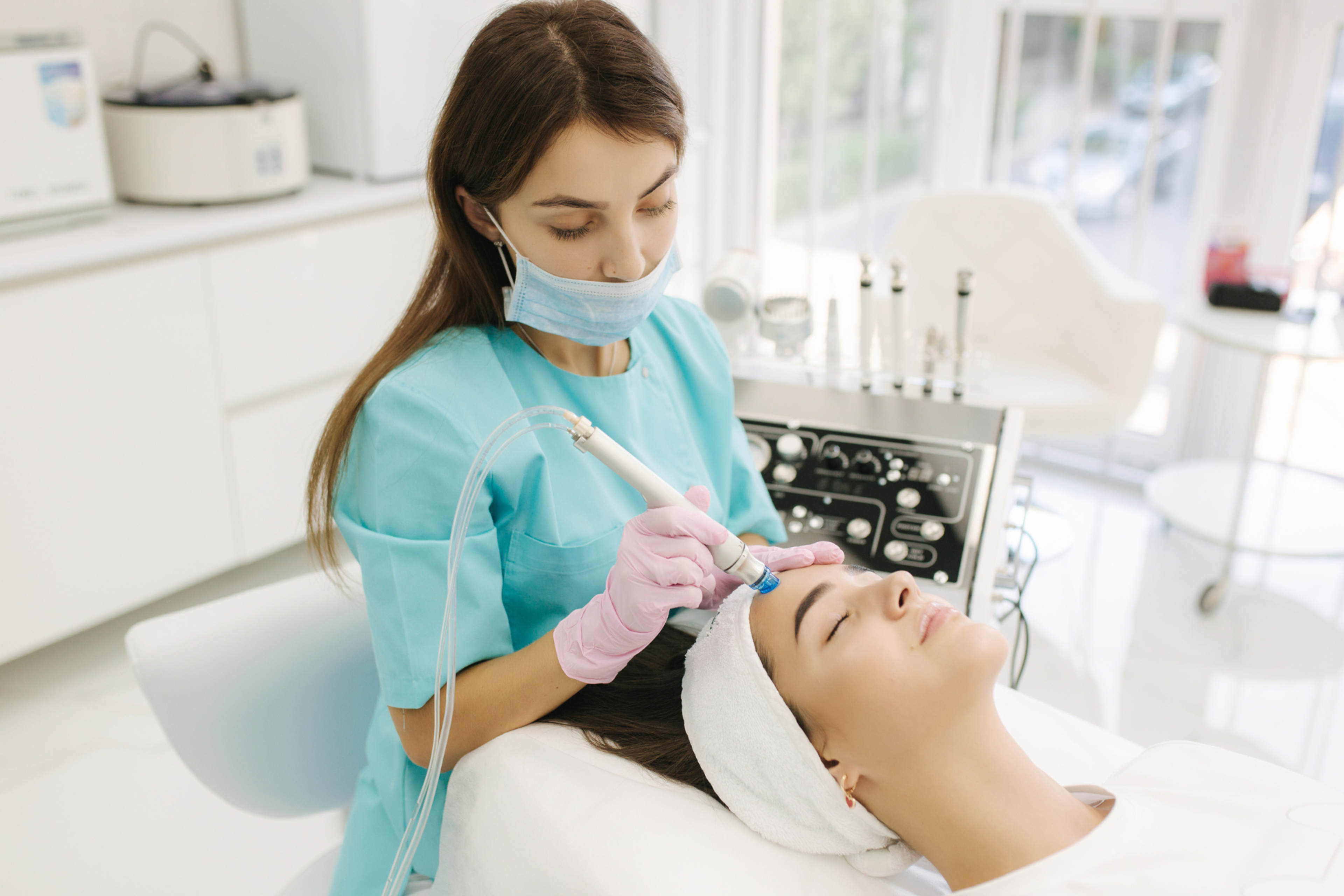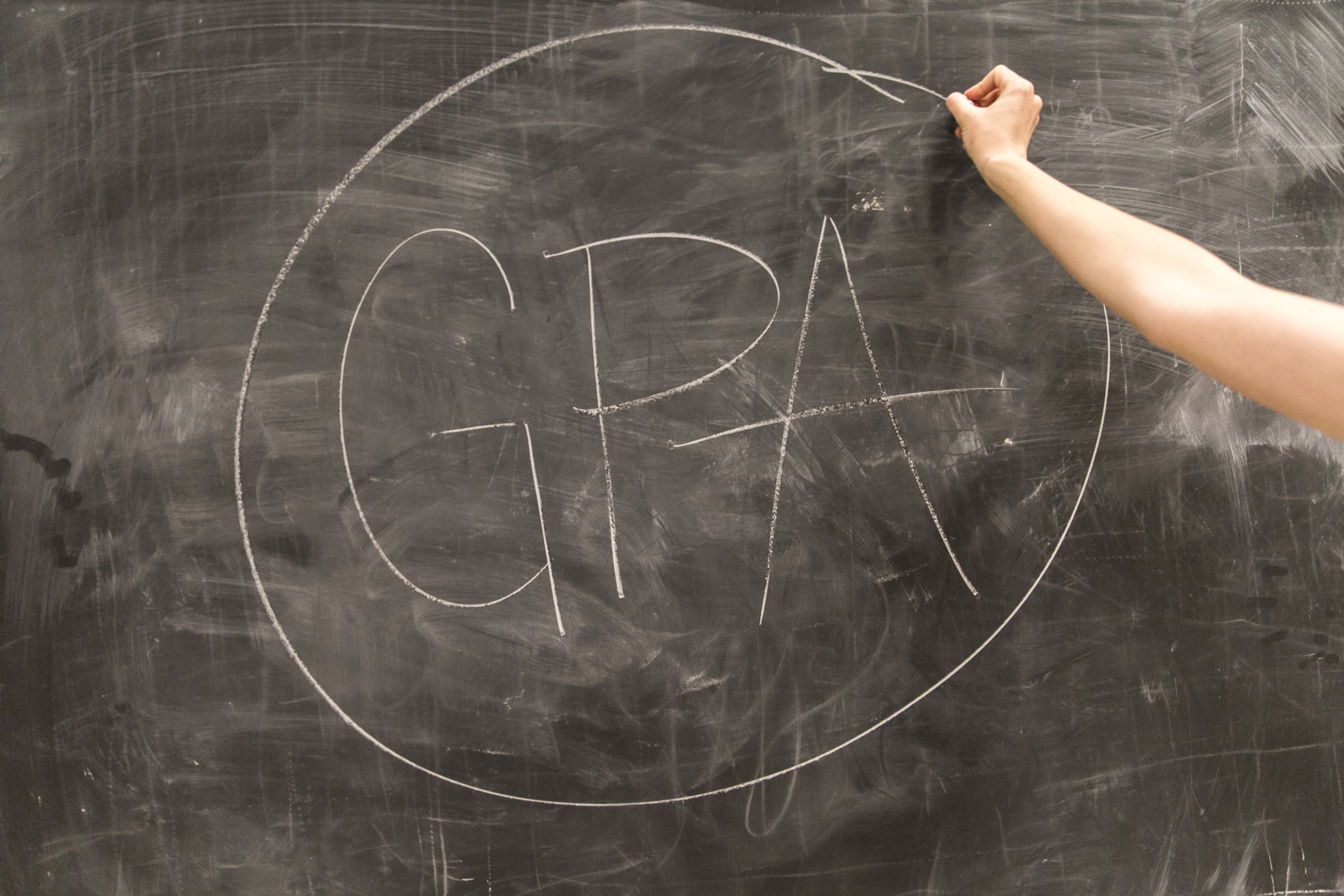Medical School Personal Statement Guide: From an Ex-AdCom (With Examples & Analysis) [2025]
Write a compelling medical school personal statement with this step-by-step guide. Includes expert tips, real examples, and strategy to stand out authentically.
Posted October 6, 2025

Join a free event
Learn from top coaches and industry experts in live, interactive sessions you can join for free.
Table of Contents
Writing your medical school personal statement can feel overwhelming, especially when everything else on your application is just numbers and boxes. This is your chance to speak directly to admissions committees and show them who you are beyond your GPA and MCAT.
In this guide, you’ll learn how to craft a personal statement that’s honest, compelling, and strategically sound, plus real examples, expert tips, and a step-by-step process to help you get started (and finish strong).
Read: The Ultimate Guide on How to Get Into Medical School
What Is the Medical School Personal Statement?
The medical school personal statement is a required component of your application to most top U.S. allopathic, osteopathic, and Texas medical schools. In response to the medical school personal statement prompt, you’ll craft a single, cohesive essay explaining your motivation for medicine and your readiness for the profession.
While each application system varies slightly, the prompt generally asks:
"Use the space provided to explain why you want to pursue a career in medicine."
Most medical students write one primary statement submitted through:
- AMCAS (MD schools)
- TMDSAS (Texas schools)
- AACOMAS (DO schools)
Read: How to Write a Powerful Personal Statement for Medical School
Why Admissions Committees Value the Personal Statement
Medical school admissions committees read thousands of applications. With limited space in interview pools, they rely on your personal statement to understand your “why” and assess qualities like:
- Personal insight and emotional intelligence
- Communication skills
- Commitment to the medical profession
- Resilience and reflection
- Fit with their school’s mission
The best personal statements show, not just tell, how your personal experiences shaped your desire to become a doctor.
Read: Mastering Medical School Interviews: Questions and Strategies
Common Misconceptions About the Med School Personal Statement
Even strong applicants fall into these traps:
“I need to sound impressive.” This often leads to overused clichés or resume dumps.
“It’s just a formality.” In reality, it plays a critical role in interview decisions.
“There’s a perfect story or format.” There’s no formula, but there is a strategy.
Medical School Personal Statement Length & Style Guidelines
One of the most common questions applicants ask is: How long should my medical school personal statement be?
Here's a breakdown of the medical school personal statement length by application system:
| Application Service | Character Limit (including spaces) | Approx. Word Count |
|---|---|---|
| AMCAS | 5,300 characters | ~850–1,000 words |
| TMDSAS | 5,000 characters | ~750–900 words |
| AACOMAS | 5,300 characters | ~850–1,000 words |
Notes:
- Spaces count toward the character limit.
- These limits apply to the personal statement only; secondary essays have separate prompts and limits.
- Word counts are approximate. Always prioritize clarity and substance over hitting a number.
AMCAS Personal Statement
The AMCAS personal statement is your opportunity to explain why you want to become a physician and what personal, academic, or clinical experiences have prepared you for that path. With a 5,300-character limit, it’s submitted to every MD school you apply to through AMCAS, so it needs to strike a balance between personal depth and broad relevance.
This essay is your chance to highlight your journey, your motivation to pursue medicine, and your growth over time. You won’t be tailoring this essay to specific schools, so focus on universal themes like patient care, your passion for the medical profession, and your readiness to take on the challenges of becoming a physician.
Read: Crafting a Powerful AMCAS Most Meaningful Experience Essay
TMDSAS Personal Statement
If you’re applying to Texas schools, you’ll write a TMDSAS personal statement capped at 5,000 characters. Like the AMCAS version, it should tell a cohesive, reflective story about your path to medicine. However, TMDSAS gives you additional writing space elsewhere, through its personal characteristics essay and optional essay, which means your main statement doesn’t need to cover absolutely everything.
Instead, use this space to craft a focused, authentic narrative that captures your “why medicine” story. Then, leverage the other essays to expand on traits like resilience, leadership, or your unique background.
Read: TMDSAS Personal Characteristics Essay: The Ultimate Guide (2025)
AACOMAS Personal Statement
For osteopathic schools, you’ll submit an AACOMAS personal statement through the AACOMAS application platform. Like AMCAS, the limit is 5,300 characters, and the prompt is open-ended: explain your motivation for pursuing osteopathic medicine and your preparation for this path.
Because osteopathic programs place particular emphasis on holistic care, empathy, and the mind-body connection, your statement should reflect values aligned with osteopathic medicine. This is your chance to show that you understand and connect with the distinct philosophy of DO training, not just general medical school goals.
Tip: Don’t just swap “MD” for “DO.” Make sure your AACOMAS personal statement genuinely reflects why you’re choosing osteopathic medicine specifically.
The Key Components of the Best Personal Statements
There’s no one-size-fits-all formula, but the best personal statements consistently include these four elements. Together, they create a compelling narrative that shows admissions committees who you are, what matters to you, and why you’ll make a great doctor.
1. A Strong Introduction That Hooks the Reader
Your opening sets the tone. Start with a specific moment, image, or scene that draws us in, not a cliché like “I’ve always wanted to help people.”
Pro Tip: Think about a moment that made you feel something conflicted, inspired, responsible, or curious. That emotional entry point often becomes your anchor.
Example: “I hadn’t planned to speak. As I interpreted between the doctor and the patient’s daughter, I realized I wasn’t just translating, I was partly responsible for someone’s care.”
2. A Clear, Cohesive Narrative
Your essay should feel like a journey with a consistent thread, not a resume in paragraph form. Each paragraph should build on the last to show:
- How did your interest in medicine develop
- What meaningful experiences shaped your decision
- How your perspective evolved
Pro Tip: Use transitions and reflection to connect your life stories, rather than jumping from shadowing → volunteering → research with no emotional glue.
3. A Genuine Motivation to Pursue Medicine
This is the heart of your statement. Go beyond generalities and explain why medicine, not just why helping people. Use personal anecdotes, patient interactions, or family members’ experiences to ground your story. Bonus points for showing a deeper understanding of the medical field, not just idealized assumptions.
What admissions committees want: Insight, maturity, and alignment with the demands of the medical profession.
4. Honest Reflections on Growth and Readiness
Medical school is rigorous. Show that you’ve thought seriously about what it means to be a healthcare provider. Where have you demonstrated resilience? Compassion? Intellectual curiosity? What have your experiences taught you about patient care, teamwork, or your own personal qualities?
It’s okay to show vulnerability, as long as you follow it with growth.
The Most Common Personal Statement Pitfalls
Even strong applicants fall into these traps. The good news? They’re all fixable if you know what to look for.
Overused themes and clichés.
You’ve probably heard them before:
- “Ever since I was a child…”
- “I’ve always wanted to help people.”
- “My grandma’s illness inspired me to become a doctor.”
These stories might be true, but they’re also generic if you don’t add your personal lens. Admissions officers read hundreds of essays with the same starting point. What they remember are the ones with unique detail, voice, and reflection.
Fix it: Dig deeper. What specific moment made you decide to pursue medicine, not just admire doctors? What challenged your thinking or forced you to grow?
Lack of specificity.
Saying “I volunteered at a hospital and learned about patient care” tells us almost nothing. The best personal statements use vivid personal experiences, with names, dialogue, setting, and sensory detail to bring moments to life.
Fix it: Zoom in. Describe the room. Share what the patient said. Reflect on how it changed your understanding of the medical profession. Specificity = memorability.
Instead of: “I saw how important compassion is in medicine.”
Try: “When Mr. Alvarez clutched my hand before surgery, I realized compassionate patient care isn’t just comfort, it’s trust.”
Avoiding weaknesses or red flags.
Many applicants think they should gloss over academic dips, gap years, or being a career changer. But medical school admissions committees are trained to spot those gaps, and they want to see maturity, not perfection.
Fix it: Address concerns briefly and honestly, but always end with reflection and growth. You don’t need to overexplain, just show you’ve learned and moved forward.
Example: “After struggling in my first year of college, I sought out tutoring and began building stronger study habits, something that’s now a core strength in my academic life.”
Should you use ChatGPT for your personal statement?
AI tools like ChatGPT can be helpful for brainstorming, outlining, or refining ideas, but they should never be used to write your personal statement for you.
Medical school admissions committees are looking for authenticity, self-reflection, and a clear sense of your voice. AI can’t replicate that. In fact, many admissions readers can easily spot essays that sound overly polished, generic, or emotionally flat, common signs of AI-generated content.
What AI can help with
Used thoughtfully, AI tools like ChatGPT can support your writing process in specific, limited ways. For example, you can use AI to brainstorm ideas, like important life stories, meaningful patient interactions, or moments that shaped your interest in medicine. It can also help you draft a basic personal statement outline if you're struggling with structure.
Some medical students find it useful for rephrasing awkward sentences or tightening wordy sections, as long as they revise the language to make sure it still sounds like you. Finally, AI can assist in identifying repetitive phrasing or weak transitions between paragraphs, which you can then improve with stronger, more personal language.
What AI shouldn’t do
While it can be a helpful tool for refining your ideas, AI should never write your personal statement for you. Essays generated entirely by AI tend to sound generic, emotionally flat, or overly formal, and admissions committees can tell. You should also never use AI to invent stories, reflections, or experiences you haven’t had.
Fabrication not only risks ethical issues but also undermines the trust that medical schools are looking for. Most importantly, AI can’t replicate your authentic voice, your personal growth, or the nuance of your motivations for medicine, and that’s exactly what this essay is meant to showcase.
Remember: Your personal statement is part of how you demonstrate your readiness to communicate like a future physician. A strong essay shows that you can think critically, write clearly, and reflect deeply… skills AI can’t fake.
Need help reviewing your AI-assisted draft or bringing more voice into your writing? Work with a top medical school admissions coach who’s helped real medical students stand out, with or without ChatGPT.
Step-by-Step Guide to Writing Your Medical School Personal Statement
This is where most students get stuck. Use this step-by-step guide to go from blank page to polished final draft.
1. Brainstorm Topics
Start by reflecting on your core motivations, values, and formative experiences. Think about specific life stories that shaped your desire to pursue medicine, moments that gave you insight into patient care, the realities of the healthcare system, or your own strengths and limitations. Don't just look for big, dramatic events. Often, quiet, meaningful moments make for the most powerful personal characteristics essay and personal statement essay.
2. Outline Your Statement
Once you’ve identified your key themes or stories, sketch a loose outline to give your writing structure. You might organize your essay chronologically (past → present → future), center it around a pivotal experience, or use a recurring theme to tie everything together. No matter the structure, your goal is to create a clear, cohesive narrative with a beginning, middle, and end.
3. Write the First Draft
Just start. Don’t worry about polishing every sentence or hitting the word count perfectly. Focus on getting your thoughts down in an honest and reflective way. Use your own voice. Share personal anecdotes. Be clear about what you’ve learned and how your experiences have shaped your understanding of the medical profession. You can clean it up later.
4. Revise for Structure and Flow
After your first draft, step back and read it with fresh eyes. Does the story build logically? Does each paragraph connect to the next? Trim any fluff, clarify vague language, and make sure every sentence serves a purpose. Ask yourself: Would an admissions reader understand who I am, why I want to pursue medicine, and what I’ll bring to the medical field?
5. Get Feedback (and Revise Again)
Don’t revise in a vacuum. Share your draft with someone who knows the medical school admissions process, whether it’s a trusted mentor, pre-med advisor, or coach. They can help you identify blind spots, tone issues, or areas that need more specificity. Revise with their feedback in mind, while staying true to your voice.
6. Know When You're Done
You’re ready to submit your own personal statement when it reflects who you are, tells a clear and memorable story, and feels polished without sounding overworked. Most importantly, it should align with your medical aspirations and give admissions committees a genuine sense of your potential as a future physician. If it makes you feel proud and maybe even a little vulnerable, you’re probably there.
Special Circumstances
Gaps or Academic Issues
If your application includes a dip in GPA, a leave of absence, or a delayed graduation timeline, it’s important to address it, but briefly and maturely. You don’t need to go into excessive detail or make excuses. Instead, take ownership and focus on what you’ve learned. Did you develop stronger study strategies? Seek out support systems? Recommit to your goals? Admissions committees appreciate resilience and growth far more than perfection. One or two reflective sentences in your personal statement can go a long way toward reinforcing your readiness for the demands of medical school.
Example: “After struggling during my second year, I met with a learning specialist and reshaped my approach to studying skills that continue to serve me today.”
Medical Career Pivoters & Non-Traditional Applicants
If you’re coming to medicine from another career, or you don’t fit the traditional pre-med mold, that can actually work in your favor if you frame it well. Admissions committees are increasingly open to applicants who bring life experience, maturity, and fresh perspectives to the profession.
Your job is to connect the dots: What drew you to the medical profession now? What did your previous path teach you about leadership, communication skills, problem-solving, or working in a medical team? Whether you come from engineering, teaching, finance, or the military, show how your background has prepared you to be a thoughtful, compassionate future physician and why now is the right time to make the transition.
Example: “As a high school science teacher, I saw firsthand how trust and empathy can shape learning. I now hope to bring those same values into patient care.”
How Secondary Essays Relate to the Personal Statement
Think of your personal statement as the why behind your decision to pursue medicine. It tells the overarching story of your motivation, growth, and goals.
Secondary essays, on the other hand, are the how. They give you the space to show how you align with a specific school’s mission, how you’ve overcome challenges, and how your personal characteristics, like resilience, compassion, or leadership, play out in context.
It’s important that your story feels consistent across both. If your personal statement highlights a passion for working with underserved communities, your secondaries should reflect that interest in program-specific ways. Avoid copying and pasting, but stay true to the narrative you’ve already begun. Together, your essays should paint a coherent picture of the kind of doctor and human you aim to become.
Read: Mastering Secondary Essay Prompts in Medical School Applications
The Bottom Line
Your medical school personal statement is more than just about why you want to become a future doctor; it’s a reflection of who you are, what you value, and how you’ve grown. With a thoughtful strategy, authentic storytelling, and expert feedback, you can write a personal statement that resonates.
Ready to polish your final draft? Book a 1:1 coaching session to get personalized support and feedback from admissions experts.
Here are a few other articles you may find helpful:
- How to Write a Standout Internal Medicine Personal Statement
- Acceptance Rates & Class Profiles of the Top 15 Medical Schools
- The Best 50+ Free Resources for the MCAT
- How to Write a Compelling Letter of Intent for Medical School
FAQs
When should I start writing my personal statement?
- It's advisable to begin drafting your personal statement during the fall or winter preceding your application cycle. For instance, if you plan to apply in the 2025–2026 cycle, starting between September 2024 and January 2025 allows ample time for reflection, writing, and revisions. Early preparation helps you meet rolling admissions deadlines and reduces last-minute stress.
How personal should my personal statement be?
- Your personal statement should authentically reflect your journey and motivations for pursuing medicine. While it's essential to maintain professionalism, sharing personal anecdotes that highlight your character, resilience, and passion can make your essay memorable. However, ensure that the content remains relevant to your medical aspirations and doesn't delve into overly intimate details.
Is it acceptable to discuss mental health challenges in my personal statement?
- Addressing mental health challenges can demonstrate resilience and personal growth if handled thoughtfully. Focus on how you've overcome these challenges, the coping strategies you've developed, and how these experiences have prepared you for the rigors of medical school. Avoid dwelling on the specifics of the challenges; instead, emphasize your journey and the insights gained.
Should I mention my research experience in the personal statement?
- If your research experience significantly influenced your decision to pursue medicine or helped develop skills pertinent to patient care, it's worth including. However, avoid turning your personal statement into a research abstract. Instead, highlight how the research experience contributed to your understanding of the medical field and your commitment to becoming a physician.
Read: Research Hours for Medical School: How Many You Need & How to Get Them
Can I reuse my personal statement for different application services like AMCAS, TMDSAS, and AACOMAS?
- While the core content of your personal statement can remain consistent, it's crucial to tailor each version to align with the specific prompts and character limits of each application service. For example, TMDSAS requires a 5,000-character essay, whereas AMCAS and AACOMAS allow 5,300 characters. Additionally, TMDSAS includes separate essays for personal characteristics and optional topics, which may influence how you structure your main personal statement.
Browse hundreds of expert coaches
Leland coaches have helped thousands of people achieve their goals. A dedicated mentor can make all the difference.


















